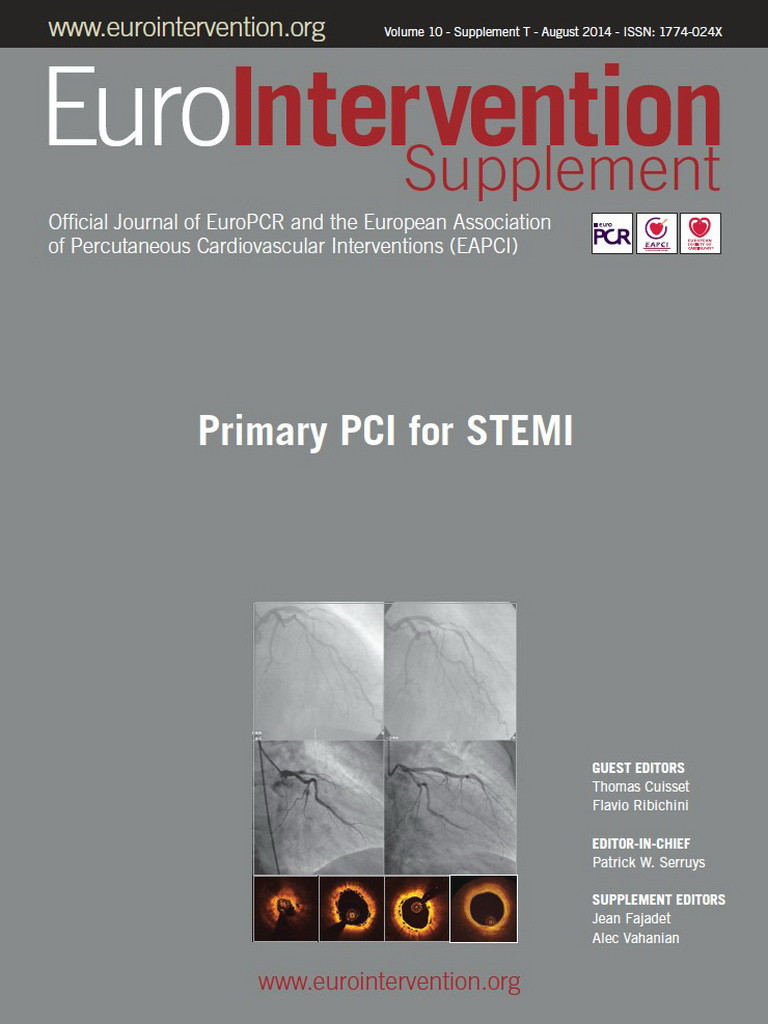Acute ST-segment elevation myocardial infarction (STEMI) remains one of the most frequent and life-threatening manifestations of coronary artery disease (CAD). The challenge of STEMI and its correct and rapid treatment is of sufficient concern to the community that it was the popularly chosen subject of the Great Debate at EuroPCR 2014. Today, though primary PCI is recognised as an evidence-based, mature intervention with a proven life-saving character, there remain important issues of its underuse throughout our continent, with wide geographical heterogeneity across Europe as well as quality of care. Similarly, there remain issues of gender and age discrimination in receiving access to evidence-based therapy as well. In addition, uncertainty remains as to how to manage patients with resuscitated cardiac arrest.
From its creation, the central mission of the EAPCI, as of our parent organisation, the European Society of Cardiology (ESC), has been to reduce “the burden of cardiovascular disease in Europe” and to do so through percutaneous cardiovascular interventions. Our association has been active in organising and encouraging the active exchange of clinical and scientific knowledge of all those involved in interventional medicine, focusing on those areas where we can increase the visibility and provide the educational and organisational resources to help advance our work for the benefit of our patients.
Nowhere is this commitment to the fruitful exchange of knowledge more evident than in our official journal, EuroIntervention. It is little wonder that, when faced with an issue of critical importance for public health across Europe, such as STEMI, the editors of EuroIntervention responded by the publication of this special, dedicated supplement.
Several aspects of STEMI are dealt with here including an overview of STEMI treatment today, summarising the questions and points that emerged in Paris during the Great Debate, as well as articles on the clinical and evidenced-based assessments behind our current decision-making process in the treatment of this condition. The supplement will also look at the management issues involved in the treatment of STEMI, focusing on different countries and their response to providing care for acute coronary syndromes (ACS). These management issues are at the heart of one of the key programmes of the EAPCI, the Stent for Life Initiative.
This initiative emerged from a call for an organised and measured response to these questions in the treatment of ACS and STEMI across Europe. Based on the expertise of specialists and specific local knowledge of each country, the EAPCI was –and remains– in a unique position to respond to these unmet needs. My predecessors have long encouraged the participation of and collaboration with the different National Societies and Working Groups, as well as a healthy and ethical relationship with industry partners, and it was out of this experience and our ongoing work in education that the Stent for Life Initiative was born.
Along with this supplement, which will provide a state-of the-art review and reference for the current treatment of STEMI, the Stent for Life Initiative is very much in keeping with the concerns and mission of the EAPCI. The goal of providing the best medical care for all remains challenging. All our technical advances cannot replace a commitment to education and to the exchange and implementation of evidenced-based clinical practice across Europe and internationally. We must continue to promote and implement current guidelines, pinpoint where and how their implantation is thwarted or partial, find solutions to their proper implementation and support the individual specialist as well as local healthcare authorities in each country to ensure that the greatest number of patients have access to the best possible treatment for STEMI available today, primary PCI.

